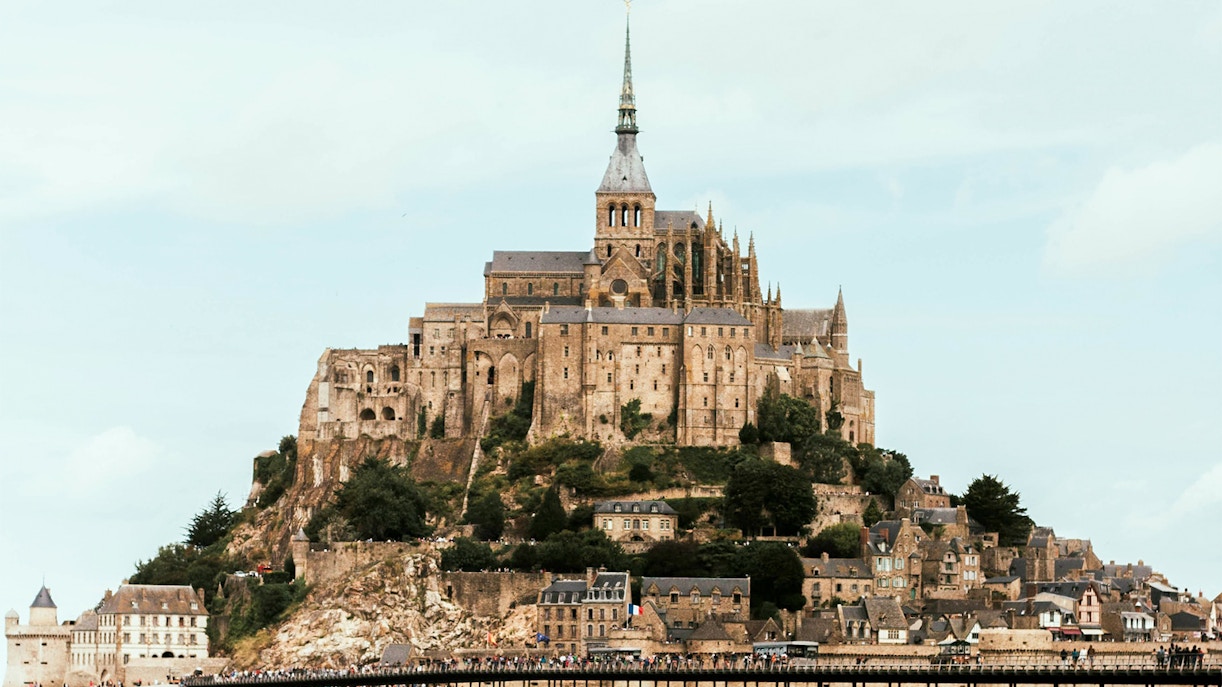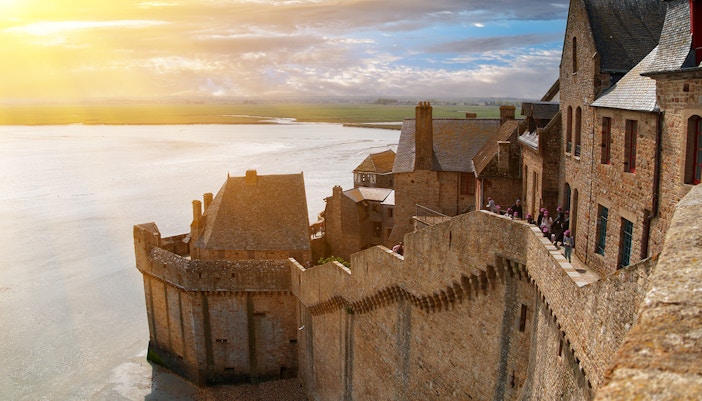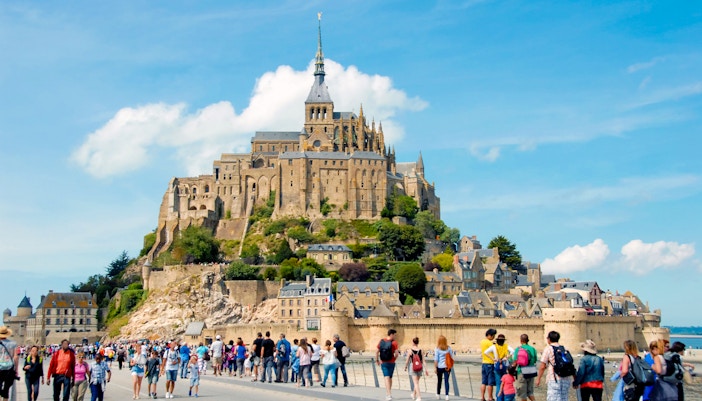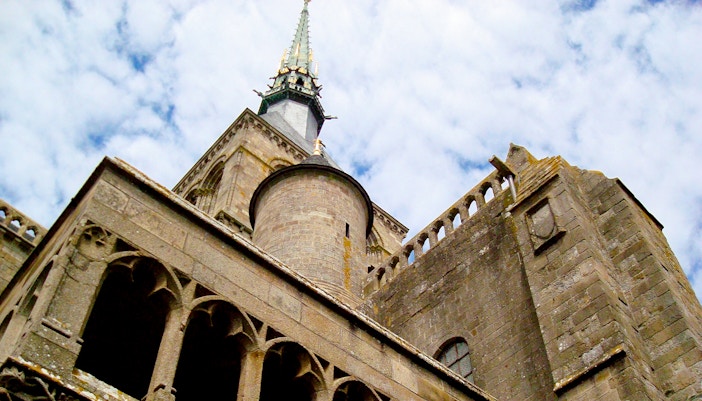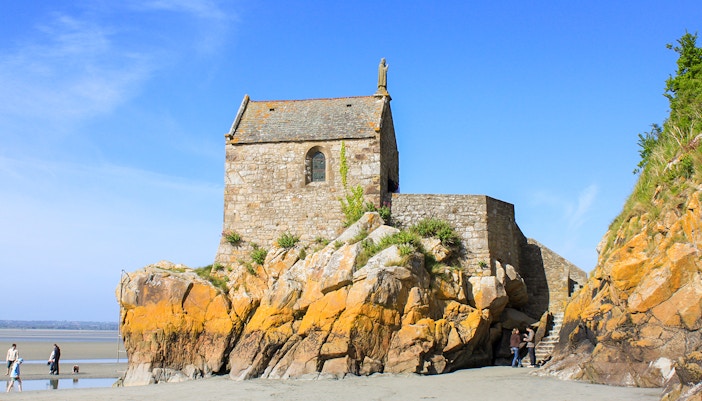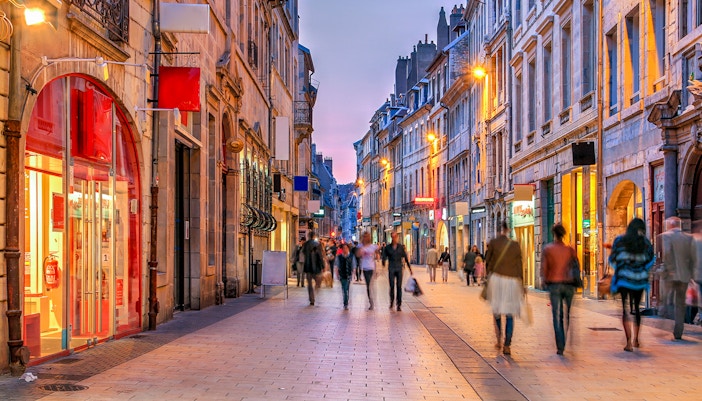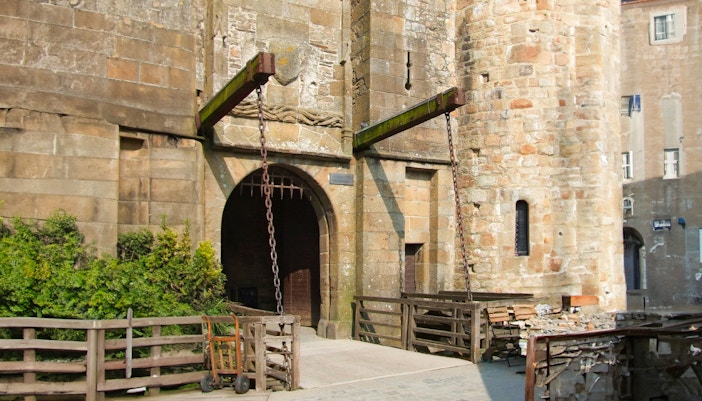Mont Saint-Michel is a medieval abbey perched on a rocky islet in Normandy, France. Renowned for its architectural marvel, the abbey rises dramatically from the bay during high tide, creating a stunning silhouette against the skyline. Built in the 8th century, it served as a place of pilgrimage and a fortress. The abbey's intricate gothic spires, stout defensive walls, and charming village at its base make it a UNESCO World Heritage site and a symbol of France's rich history. Visitors are captivated by its unique blend of natural beauty and human ingenuity, making it a must-see destination.
